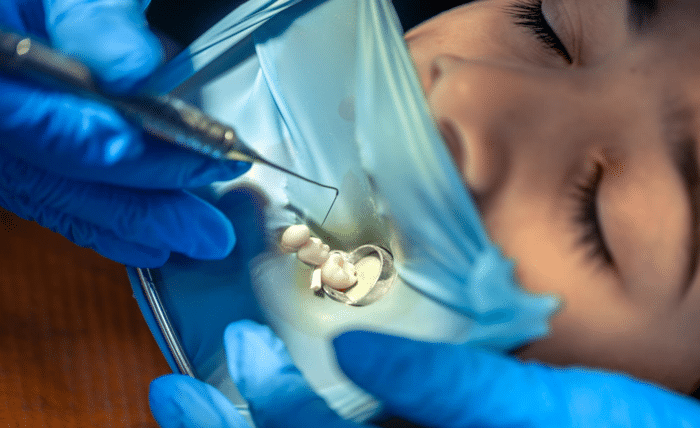
For decades, root canal treatment has carried a reputation that triggers fear in patients long before they step into the dental chair. The idea of intricate cleaning, long files, and drilling into the depths of a tooth has created cultural myths about unbearable discomfort. But modern dentistry has steadily dismantled those perceptions, not just through better anesthetics and gentler approaches, but also through revolutionary technology. One of the most promising frontiers is nanotechnology—specifically, nanotech irrigation—poised to transform how dentists clean the root canal system, making treatment more precise, more effective, and, importantly, a cornerstone in conquering the pain.
The Challenge of Cleaning a Complex System
The anatomy of a tooth’s root canal system is anything but straightforward. A labyrinth of tiny canals, lateral branches, and micro-irregularities make complete disinfection nearly impossible with traditional instruments alone. Even advanced rotary files cannot reach the microscopic nooks where harmful bacteria and biofilm thrive. This is where irrigation comes in—liquid solutions designed to flush out bacteria, dissolve tissue, and prepare the canal for filling.
Historically, these irrigants rely on chemical strength and mechanical agitation. While effective to a degree, they cannot always penetrate deep enough, nor can they guarantee that every microscopic invader is eliminated. Residual bacteria are the main reason some root canal treatments fail, leaving patients with recurring infections or retreatment needs.
Nanotech irrigation changes that equation by working at the molecular level, directly where conventional tools fall short.
How Nanotech Irrigation Works
Nanotechnology refers to materials engineered at the scale of nanometers—one-billionth of a meter. At this scale, particles behave differently, carrying unique physical and chemical properties that can be harnessed for medical innovation. In root canal treatment, nanotech irrigation leverages nanoparticles with antibacterial, antifungal, and tissue-penetrating capabilities.
Silver nanoparticles, for example, have been studied extensively for their antimicrobial effects. Their ultra-small size allows them to infiltrate the deepest microtubules of dentin, neutralizing bacteria where even the thinnest files cannot reach. Similarly, chitosan nanoparticles—derived from natural biopolymers—can bind to bacterial membranes and destabilize them, creating a double assault of physical penetration and chemical disruption.
What makes nanotech irrigation particularly exciting is its dual advantage: precision in disinfection and minimal collateral damage. Unlike stronger chemical irrigants, nanoparticles can target bacteria without harming surrounding tissues, reducing inflammation and supporting faster healing.
Beyond Disinfection: Healing at the Molecular Level
The promise of nanotech irrigation is not limited to cleaning. Research suggests that nanoparticles can be engineered to deliver therapeutic agents directly inside the canal system. Imagine an irrigant that not only kills bacteria but also delivers growth factors or regenerative molecules to stimulate dentin repair. This possibility points toward a future where root canal treatment is not merely about removing infection, but actively guiding the tooth back to strength and stability.
Patients, who often associate root canals with pain and post-treatment sensitivity, stand to benefit most. By eliminating bacteria more completely and reducing tissue irritation, nanotech irrigation addresses the root cause of discomfort, paving the way for gentler recoveries. In short, it becomes a tool for conquering the pain, both in the chair and in the days following the procedure.
Redefining Patient Perceptions
One of the largest barriers in endodontics is not technical but psychological: the patient’s perception. Stories of dreaded root canals linger in popular culture, sometimes overshadowing the reality of modern dentistry. When technologies like nanotech irrigation enter the conversation, they give dentists a new language of reassurance.
Explaining that treatment now involves molecular-level cleaning—akin to a precision-guided therapy rather than brute-force mechanical scraping—can help reframe patient expectations. Root canal treatment becomes less about enduring a dreaded procedure and more about experiencing cutting-edge care that is faster, cleaner, and far less painful than in the past.
Integration into the Digital Workflow
Nanotech irrigation is not an isolated innovation. It fits within a broader transformation of dentistry, where digital imaging, AI-powered diagnostics, and laser-assisted procedures are converging into a seamless workflow. For example, cone-beam CT scans can map the complex canal system in three dimensions, allowing dentists to identify hidden spaces. Nanotech irrigants then take over where files and lasers cannot reach, ensuring those spaces are not just visualized, but thoroughly cleaned.
This integration elevates root canal treatment from a mechanical exercise to a digitally enhanced, biologically precise therapy. It’s not hard to imagine a near future where endodontists use AI algorithms to predict bacterial density in different regions of the tooth, selecting customized nanoparticle formulations for each patient.
The Road Ahead: Challenges and Opportunities
As with all new technologies, nanotech irrigation faces hurdles before widespread adoption. Regulatory approval, cost of production, and long-term clinical studies are essential to ensure safety and consistency. Dentists also require training to understand the mechanisms and benefits of nanoparticle-based care.
Yet, the opportunities are profound. With a market increasingly focused on minimally invasive dentistry and regenerative outcomes, nanotechnology sits at the crossroads of patient expectation and clinical capability. For patients who fear root canal treatment, the promise of molecular-level cleaning and faster healing may finally turn anxiety into trust.
Nanotech irrigation represents more than just a technical upgrade; it is a paradigm shift in how we view root canal treatment. By penetrating the most inaccessible spaces of the tooth, eliminating bacteria at their molecular core, and even delivering regenerative benefits, nanoparticles promise a new era of precision dentistry. Most importantly, they help rewrite the patient experience, moving root canals away from the shadow of fear and toward a future defined by comfort, healing, and conquering the pain.




